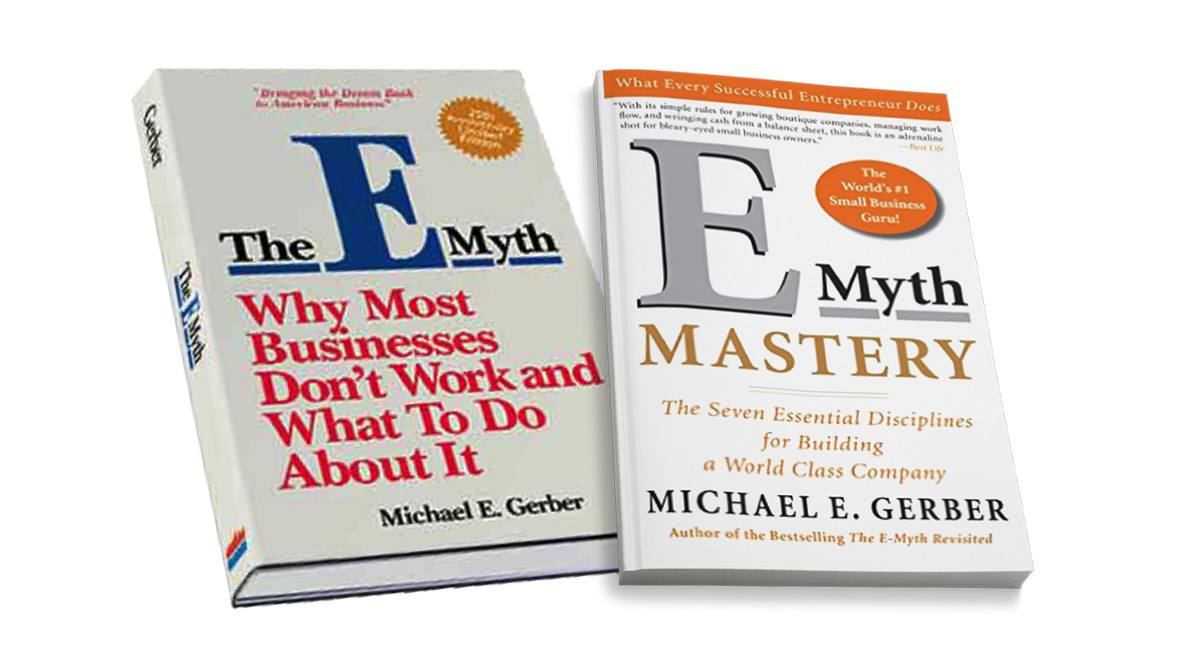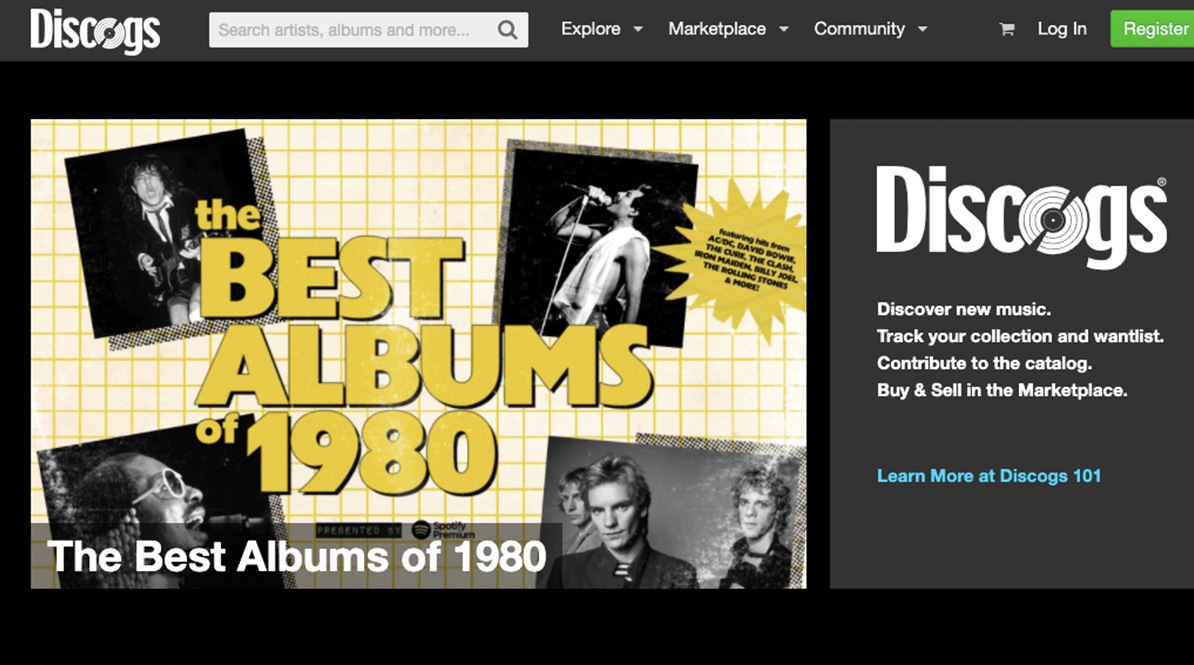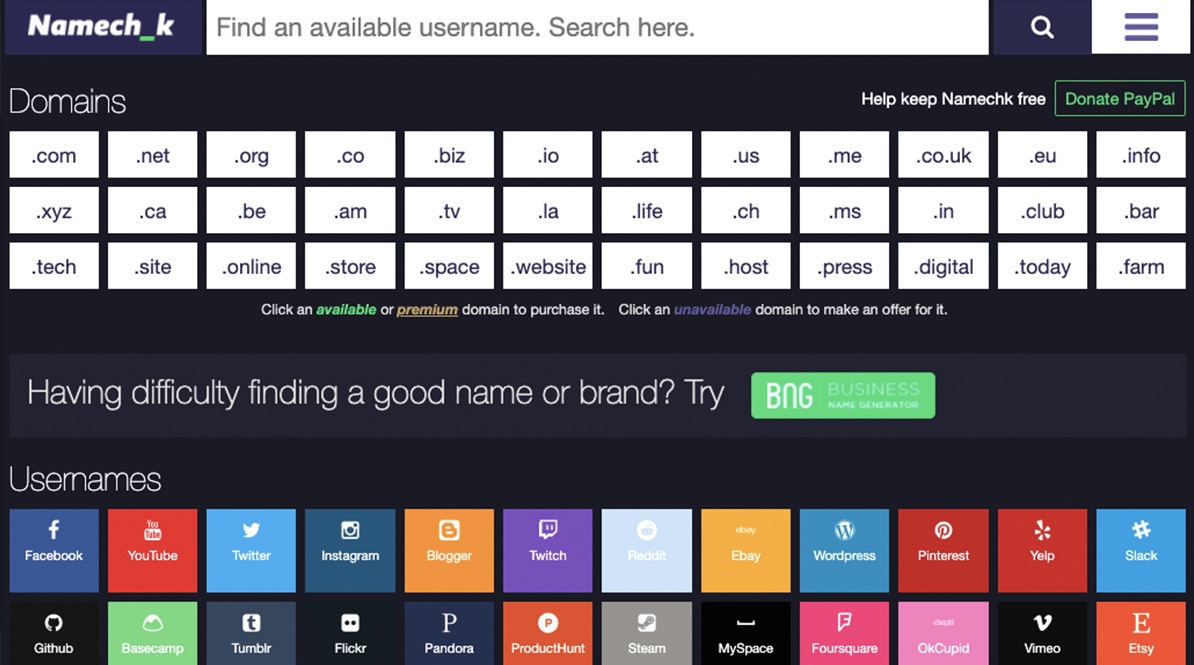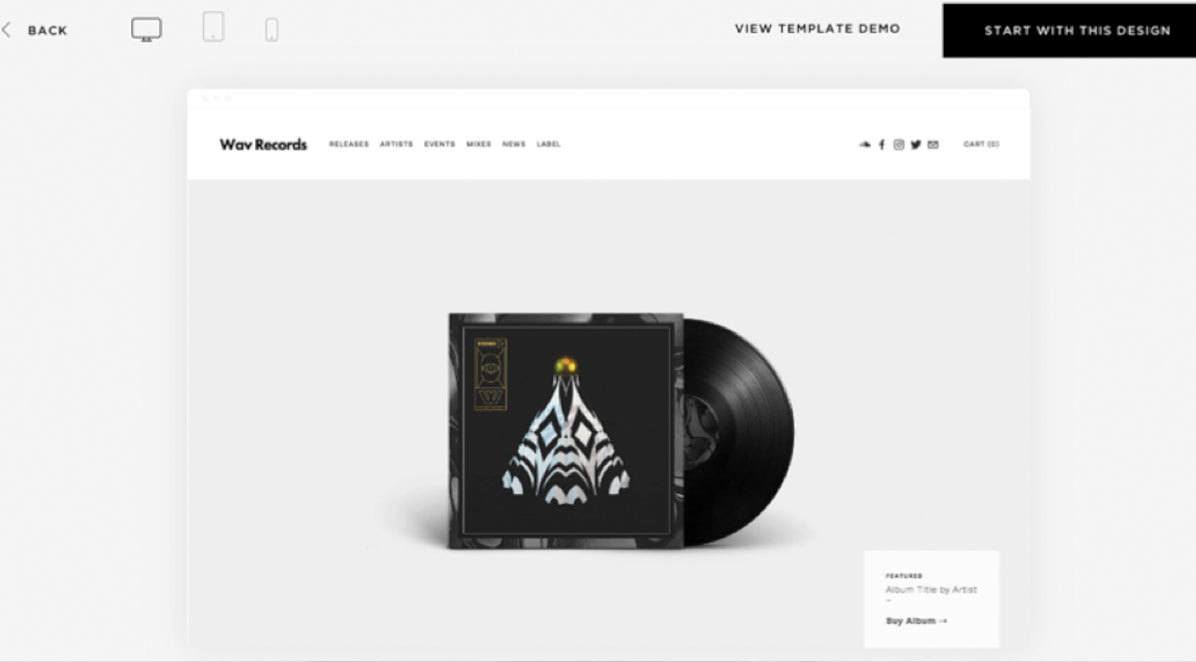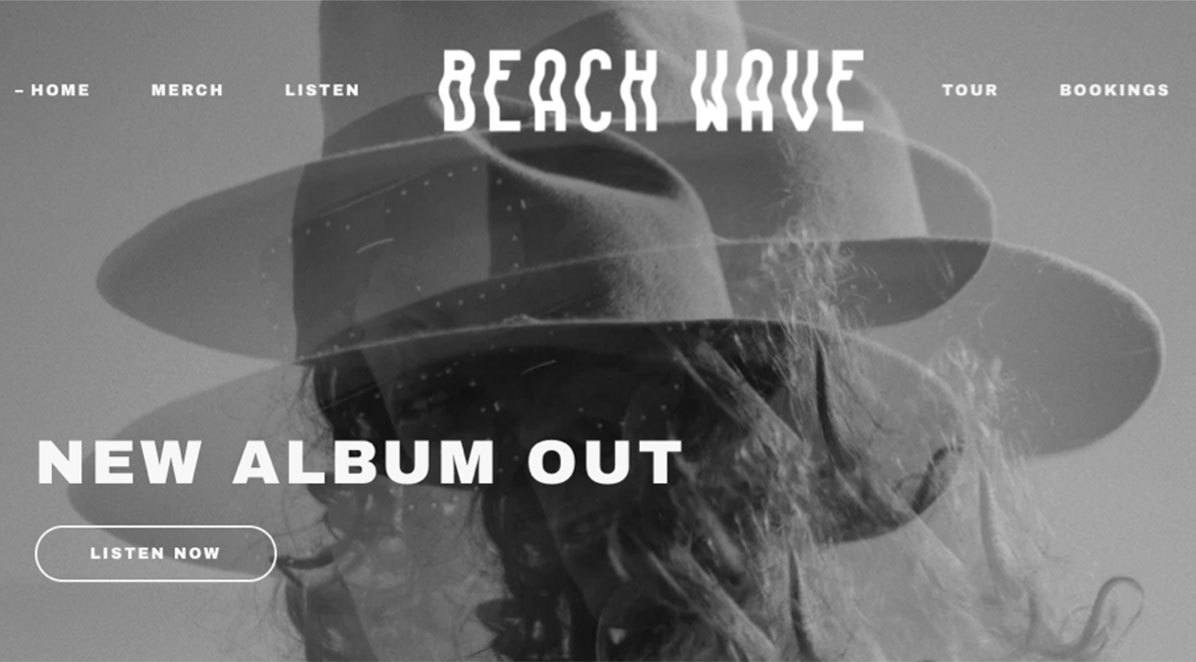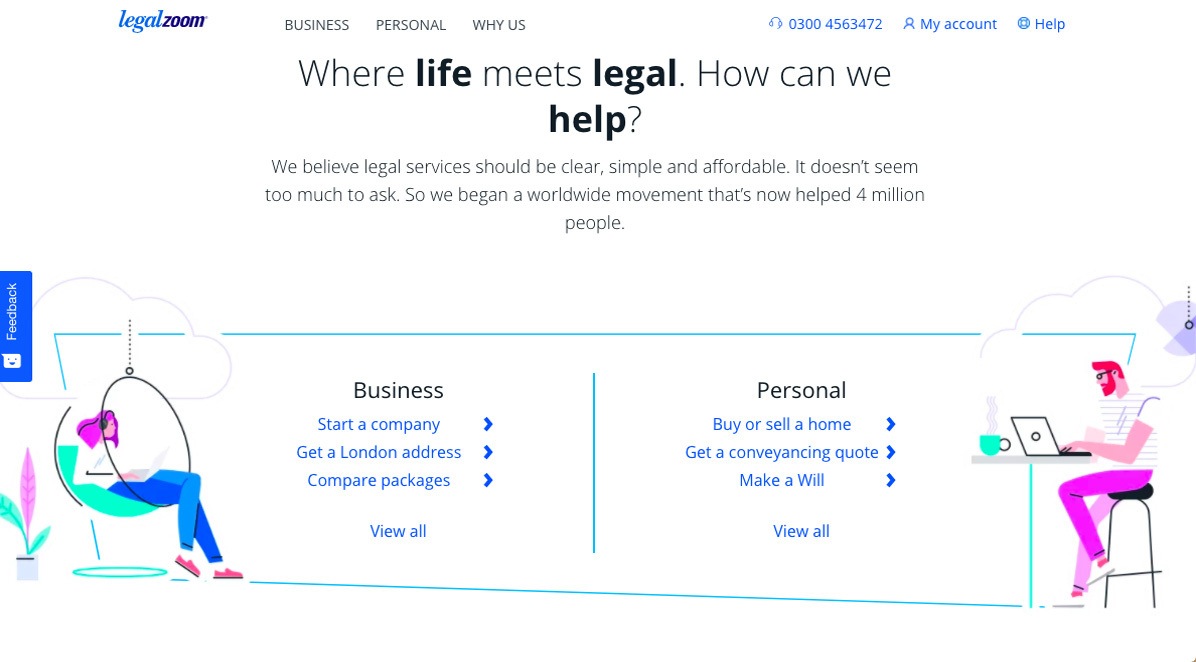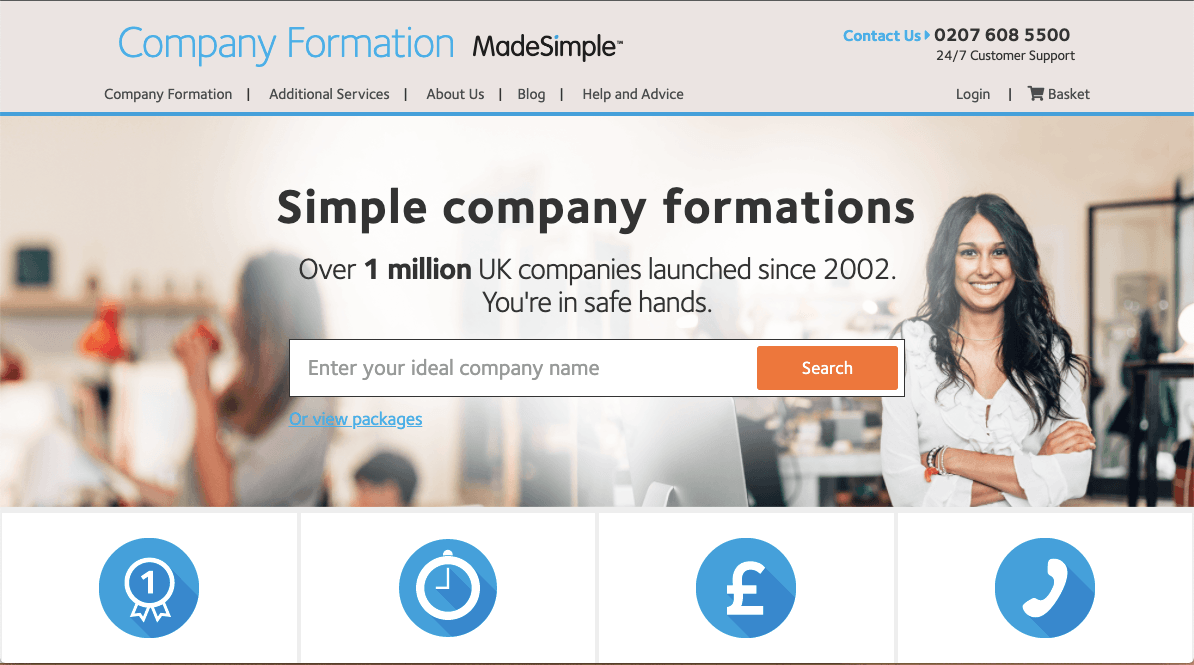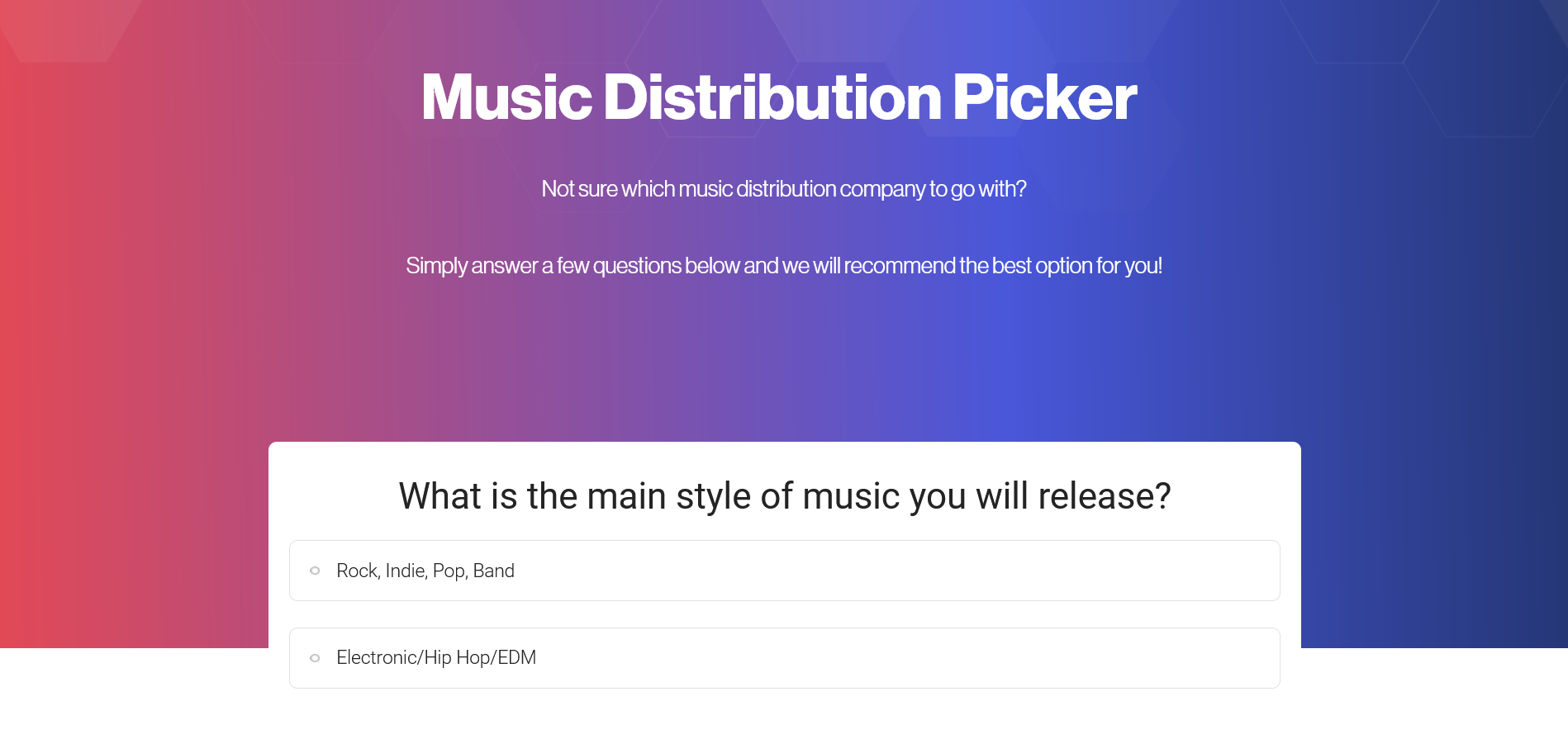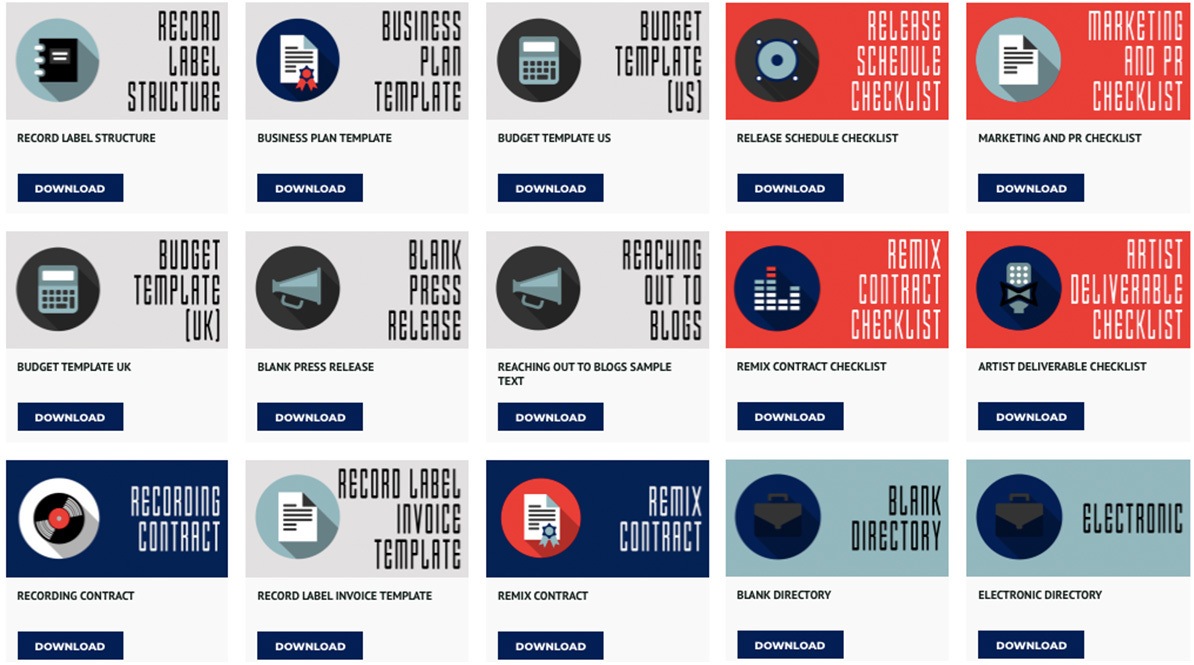Do you want to have your own successful record label, releasing music to thousands of adoring fans?
Do you want a blueprint you don't have to think about, and can just crack on with creating your label?
And do you want to do this in just 7 steps?
You are in the right place! This article will take approximately 15 mins to read, and 7 steps to execute.
This article will show YOU what needs to be done in order to get a record label up and running in seven steps and more importantly, give you access to the necessary tools to make sure you can do it.
You are going to learn:
How to choose a record label name
How to get a record logo designed for $20 in 1 hour or less.
The number one thing you need to do to start a record label today that will cost you less than $10.
Every step to release and promote a record release.
A record label is simply another business – and needs to abide by the same principles if you want it to be a success. A big part of this is having plans, processes, operation procedures and blueprints in place.
One of the greatest books that explains these principles is 'The E-Myth' by Michael E. Gerber. It's an excellent read and we have taken the principles in creating a plan to start a record label in seven steps.
In short, if you are organised and have processes and blueprints to follow for your releases, you'll achieve the success you want.
So... let's get started!
Record Label Basics
A record label is essentially made up of three main areas:
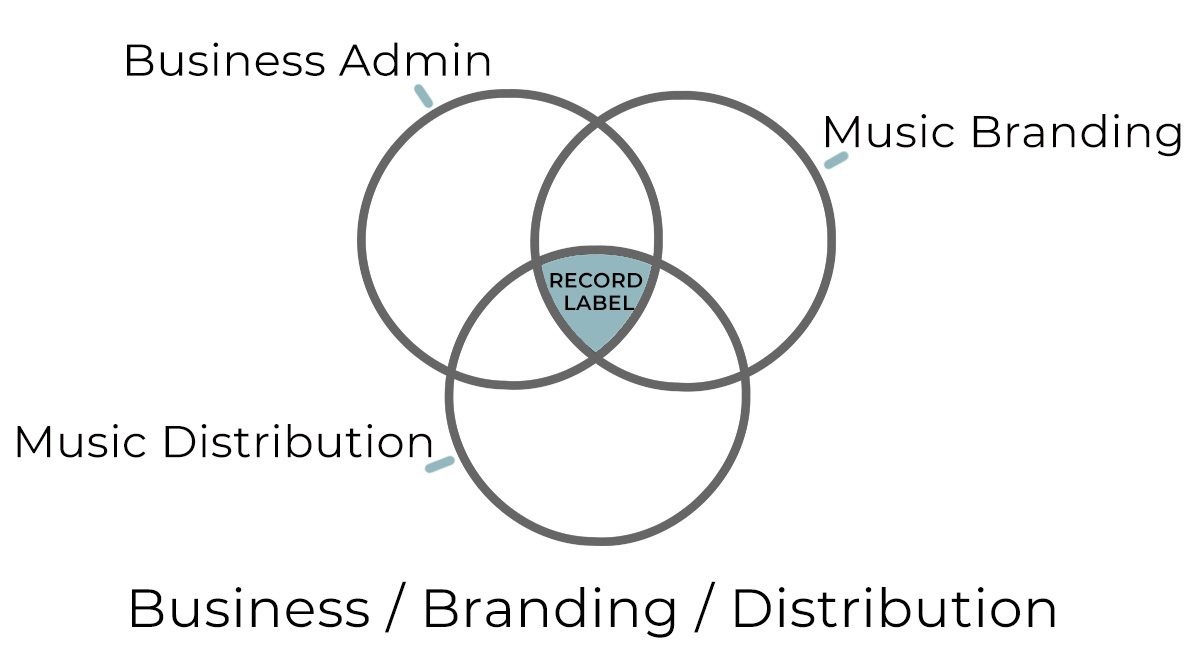
1. Music and Branding
This is the actual music and the branding around the music such as artwork or music videos, and the marketing of the music and artists.
2. Music Distribution
This is the part of a record label concerning getting the music on to the platforms so fans can buy and listen to it.
3. Business Administration
This is the area of a label that looks after the paperwork, the record contracts, and looking after artists royalties.
When you set up a record label, you are setting up the Business Admin and Distribution areas. Once you have that set up, you can then plug the music and branding, to create the complete record label model.
So now we have a simple explanation, let's dive into setting up the label.
Step One
How to write a business plan

"If you fail to plan, you are planning to fail"
Benjamin Franklin
So, we are up bright and early to get started on creating our record label. But how are we going to know what we are creating?
- What music we are going to put out?
- What will our name will be?
- When are we going to release our first record?
- Who is going to help?
- How much will it cost?
- Why are we even starting a record label?!
So many questions!!!
The very first thing we must do is create a record label business plan. This will answer all of the above questions and give you a clear vision for your success. A business plan will also guide you, it will force you to decide what your first, second and third release will be, which artists you will work with, your time frames, and how much money you will need to get started.
A business plan will give you the confidence to move forward in a meaningful way, giving you the best possible chance of success.
Let's break down the seven sections of a business plan
Business Plan Breakdown
01 Title Page and Summary
This one is easy, and you write it last. Simply summarise each section into a sentence to create a short paragraph summary of your overall business plan.
02 Strengths, Opportunities and Core Values
Ask yourself these questions:
- What is important to you as a label?
- What music style are you going for? Are you pushing underground music and being original?
- Or are you interested in working with more mainstream artists?
03 Business Strategy
These are your tangible goals:
- How many releases do you aim to put out?
- Do you wish to sign new artists regularly?
- When do you aim to break even on revenue?
04 Distribution channels and label products
- Who will you distribute your music through?
- Will you do events?
- Will you do merchandising?
05 Label Management and Operations
- Who are the key people involved in the label?
- What experience or training do they bring to the goals of the label?
You can also list here any key partners you will use such as The Label Machine, merchandise companies, or management companies.
06 Marketing
What are your marketing goals and objectives for the label? The main sections to answer will be:
- Your goals and objectives
- Who your target market is
- Your advertising and promotion activities
07 Financial budgets and forecasts
This is the section where you attach a summary of your budgets and revenue forecasts such as:
- The labels startup costs
- The cash flow forecast
- Your expenses
- Any optional revenue streams you may have access too
- And if you are going to take any loans
It can be daunting to write your first record label business plan however we have templates available at The Label Machine with pre-filled in examples to use, which makes writing a business plan very easy.
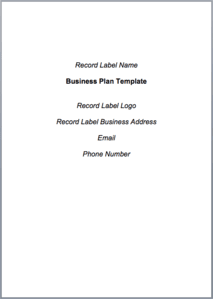
Essential Record Label Business Plan Template
Download the full record label template to follow along with this article, including examples to edit for your own record label.
Step Two
How to organise your business file system
You can set up 12 folders on a computer hard drive or cloud that form the structure of your record label. This really is the backbone of a record label in terms of keeping organised.
This is where you create your record label into an organised system, with processes, and checklists within a file browser. It's where all the important information lives and it’s a good idea to host this on dropbox or google cloud so its permanently backed up and the files can be easily shared with designers and artists.
Watch the video below to see what this looks like in detail.
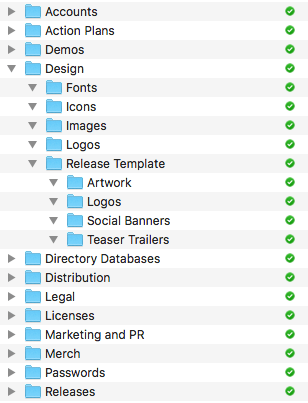
File Structure Template
Download this helpful template for your file structure system so you can make sure you are ticking all the right boxes on your record label set up.
Step Three
The number one thing you need to do to start a record today that will cost you less than $10
Decide your Record Label Name.
Everything starts with the name. You need this to register your label as a business, register your website domain, get a bank account, create a logo
No name =
no record label
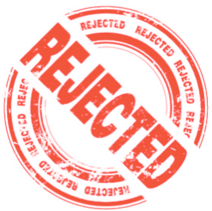
If you already have a name, great, if not, do some brainstorming. I would also recommend using a thesaurus, and you can Google translate words that are relevant into another language, like latin, to find something that sounds good.
Once you have brainstormed your name, there are two place to go and check it's not used already:
1. Discogs
This is a database of every record label in the world so best place to start.
Check the name is not used, if it is and you really want to use it, you can try adding one of the following suffixes:
- Records
- Recordings
- Music
- Entertainment
- Recording Company
If it's the same genre then it's probably best to find something different but if it's a different genre or it's an older label not releasing, you can still use the words above.
2. Namechk
Another reason you need to check that another label or artist is not using the same name as you is because you want to own your social media handles.
On Namechk you can instantly check which handles are available across over 30 domains and 80 social media companies.
Once you have checked the name at Discogs, head over to Namechk to make sure that the name you like has enough social handles available.
After you've decided on your name, check and make sure:
- It sounds good over the phone - Wont be mispronounced or misspelled, which defeats the purpose.
- It conveys your style and brand.
- It is not taken already.
- You have triple-checked Discogs and Namechk tools to make sure it isn't taken, and you can use the social handles you want.
Always make sure to consider the acronym of the name, Balearic Underground Music might be fine in full, but the acronym isn't so great.
Good to go?
Then head over to one of the below sites to register and lock that name in!
- https://www.123-reg.co.uk (£6.99)
- www.godaddy.com ($0.99 for first year)
When choosing a website url, using .com is always the best. Get it over anything else if possible. Music is international, and you need to show your website is international too.
That is the first step to take in starting a label – for under $10!
Step Four
What kind of website you need to have and which social media platforms you need to be on.
There are four options for websites to choose from:
01 Website in a Box
- Squarespace https://www.squarespace.com/
- Wix https://www.wix.com/
- Weebly https://www.weebly.com/
These are great if you have zero technical skill as they are all basically point and click to build your website. Very easy. The cons are that you are restricted on how much you can customize, but that won't be a problem if you are not doing anything to fancy.
It's also worth mentioning bandcamp.com & Bandzoogle
- Bandcamp https://www.bandcamp.com/
- Bandzoogle https://www.bandzoogle.com/
These are both targeted specifically for musicians and have a monthly fee subscription to use them. Bandcamp has a 'Record Label' option which allows you to manage a catalogue of music, and there are some high profile record labels such as DFA Records that use this as their main record label page.
Bandzoogle is aimed at individual artists and band music sites, but you could in theory use for your record label website.
02 WordPress
WordPress powers over a third of websites online. This gives you more versatility to create a more dynamic site, as there are hundreds of plugins available, but you need to have a bit of technical ability or be prepared to pay someone to help implement it. $25/ year to host with free plugins.
There are hundreds of free music label and artist themed pages to choose from, and some excellent paid versions for very professional themes on Theme Forest
03 Agency
This is by far the most expensive option, and personally an unnecessary cost when starting out considering the other options available.
03 Store Website
This is a great option if you want to be selling physical music products and physical merchandise. An excellent company to use is www.shopify.com. They are about $120 a year and come with some great themes.
What would I recommend...?
SquareSpace
There are some great non-cheesy record label templates.
and GoDaddy
The website builder has been upgraded and you can make a really professional website in under an hour
Things to remember
- Keep the website simple.
- Logo at the top.
- Music page (Soundcloud / Spotify playlist).
- About section.
- Links to each of your social media pages.
- Contact page.
Social Media Handles
Once you have decided your name you now need to sign up to each the main social media channels:
- Soundcloud
- Youtube
Optional
- Snapchat
It's worth registering the optionals, even if you don't post content, it's better to own them now. Ideally you pick a handle that is available on all platforms. If your name is taken try:
- Acronym of label name
- Label name missing out the vowels
- Replacing letters with numbers e.g. 5 for a S
- Adding your country e.g UK/US/AU
- Adding to the end (RECS, INC, HQ, MEDIA, ENT etc)
- Prefixing with WEARE, THISIS, REAL, THEREAL etc
Step Five
Get a record label logo designed for $20 in one hour or less.
Ok, let's do something creative!
Let's get a record logo designed for $20 in 1 hour or less.
There are three options:
$500-1000
02 Hire a designer from a Freelance website
03 Use an online logo maker
$20
It’s worth mentioning that Option 3 is great for when you are starting out and want to get a label up and running quickly with little capital. Of course, once you start making money its worth working with a designer when you can afford it.
Watch the video below on how quickly you can create a logo with Free Logo Design.
Step Six
Registering your label as a business
The three reasons why you need to register your record label as a business that no one tells you.
1. Protection
If, on your way to the studio you have a car accident, or you accidentally injure someone at a gig, the company will be liable, not you personally. Therefore your personal assets are protected.
2. Legitimacy
When you set up as a business and they see you are a 'Label Name Ltd' or 'LLC', and that your email address is yourname@labelname.com - they know they are dealing with a professional. You are going to have more doors opened and you're going to be treated as an industry professional.
3. Motivation
There are some hoops to jump through to start a business, so it's a commitment to follow through with taking your record label business seriously. There are some costs, and in some states in the US it can cost $300 –if you are in the EU or UK not as much – but the point is you will be motivated to make that money back in your first year.
What you need to do:
Use an online provider to walk you through it. See the options below depending on where you are based:
Registering in the US: https://www.legalzoom.com/
And in the UK: https://www.companiesmadesimple.com/
And anywhere else: https://stripe.com/atlas (scroll to the bottom and pick your country)
Step Seven
Choose your distribution model
The final step is to pick a distribution model (and I'll show you a very quick way of picking the best one for you in a bit)
When picking a distribution model, there are three types:
01 Aggregators
An Aggregator is a distributor that works with companies with huge catalogues such as major record labels or smaller distributors. A company called The Orchard is an example of this. Starting out not for us but good to know about them.
02 Self-Distribution
These distributors offer very simple no frills distribution, they provide no marketing support or extra accounting or promoter services, and they usually charge just a flat fee to distribute your music. No ongoing costs or a very low %, but will charge an upfront fee. Companies such as DistroKid, CD Baby, and Tunecore are examples.
03 Serviced Distribution
These are distributors that work alongside you, they will have contacts to ensure your music is considered for playlists, and often have tools to help promote releases. You have to apply to these guys with a good business plan, they don't work with everybody.
Examples are; Believe Digital, Ingrooves, AWAL, and specifically for electronic music FUGA, Label Engine, Label-Worx, and Symphonic, as they work closely with Beatport and you want to try and work with these guys.
Next step is to head over to the DISTRO PICKER TOOL – answer the questions and it will give you a recommendation for distribution!
All right, that's it – you should be all set up!
Now you are ready to start releasing music which starts on your second week

Step Eight : BONUS
Every step to release and promote a record release
Bonus! A final checklist of every step needed to get yourself ready for a record release.
Get music complete
Create artwork
Create release strategy and schedule
Create marketing and PR schedule
Create marketing assets
Write a press release
Write recording and remix contracts
Record metadata
Send music to distributor
Secure blogs, playlists, and DJ promo's
Secure Spotify playlist
Create your Facebook and Instagram ads
Build your release page
Activate PR and marketing schedule
Release music record
And of course there are blueprints, checklists, and databases for all of these which you can find in the resources section of The Label Machine.
And that's it!
Mission accomplished!

Join The Label Machine now
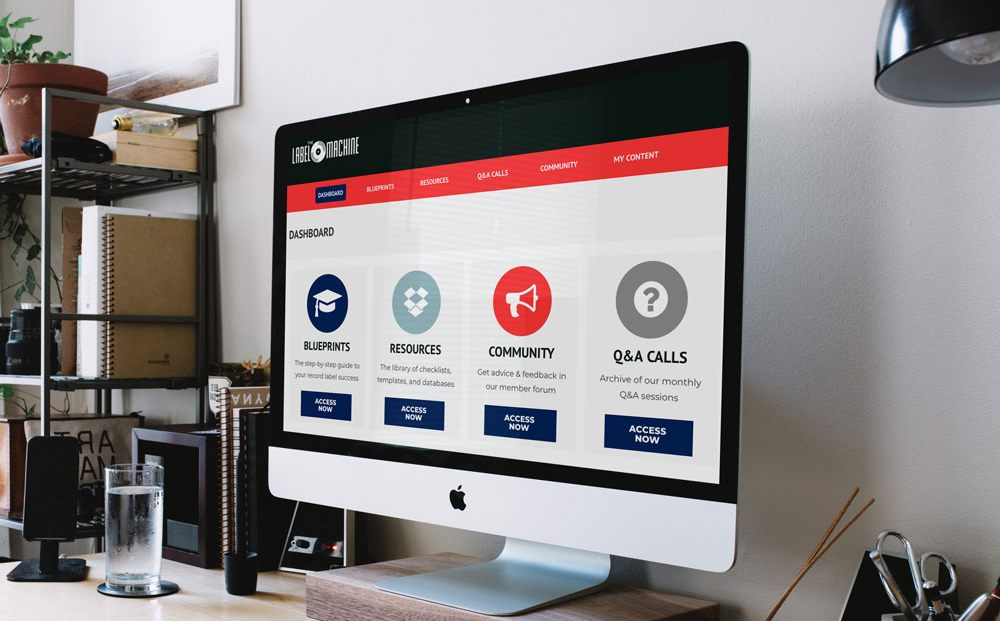
If you want access to more in-depth resources, cheat sheets, guides, access to weekly live q+a’s and a community of like-minded label owners then click here to find out more and join The Label Machine today.

